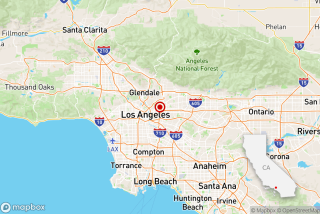Malignant Ripples
Eleven-year-old Bryan Lockley probably never touched a crack pipe, but it would be wrong to ignore the role that crack cocaine played in the life and death of the South Los Angeles sixth-grader. He was born in prison to a mother who had spent most of her adult life addicted to drugs, and he was raised by his grandparents, along with a cluster of siblings and cousins, in a succession of cramped apartments along Hoover Avenue.
Bryan was shot to death 10 days ago, authorities say by his 14-year-old cousin, who had been raised alongside him by their grandmother after his own drug-addicted mother disappeared.
The family’s tragedy is a sobering reminder that the scourge of crack cocaine is still remaking, and taking, lives. The epidemic may have crested and ebbed, but its legacy -- broken families, rising juvenile violence, a soaring prison population -- is claiming a second generation of victims. In the 20 years since crack’s easy high began burning through inner-city neighborhoods, its ripple effects have left few families there untouched. Foster care caseloads tripled as drug-addicted parents abandoned, neglected or abused their children and left elderly grandparents to fill the void. Guns flooded the streets, and the rate of teenage homicides quadrupled as young men turned their entrepreneurial skills to dealing drugs. Stiff prison terms failed to deter drug addicts, but thousands were sent back to the streets hardened and scarred.
Society was unprepared for the tenacity and ferocity of the crack epidemic. There were never enough publicly funded treatment programs with the intense, long-term care that crack addicts require. An absence of job training and counseling made relapse common. And after initial hand-wringing over the bleak prospects of “crack babies,” damaged in utero, little was done to address the long-term needs of children growing up in the poverty and chaos that drug abuse breeds.
Now a new drug crisis is on the horizon. An epidemic in methamphetamine use has fueled a surge in child abuse, violent crime and overdose deaths, first in rural counties and now in California’s cities and suburbs. Meth accounts for more admissions to emergency rooms and drug treatment programs than cocaine, and child abuse cases involving meth are more likely to involve violence than neglect.
If we don’t learn from the failure to address the dynamics of crack, “meth babies” will be dying a generation from now -- not from the drug but from its ripple effects.
More to Read
More to Read
More to Read
Start your day right
Sign up for Essential California for news, features and recommendations from the L.A. Times and beyond in your inbox six days a week.
You may occasionally receive promotional content from the Los Angeles Times.





